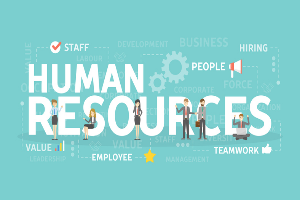
Question: We would like to add a working interview to our selection process. Is this permitted and are there other options to help us finalize our selection?
Answer: Yes, you can have a working interview as part of your selection process, but there’s a big caveat. If you have the candidate do “real work” that is useful to your business, you’ll need to hire them as a temporary employee, have them complete new hire paperwork, pay them at least the minimum wage, and then jump through any termination hoops if you don’t hire them. You can’t lawfully classify them as an independent contractor for this purpose. Here are a few more things keep in mind:
If you’d prefer to avoid the hassle of hiring candidates as temporary employees, there are alternatives that can yield similar results. Here are two we recommend:
This Q&A does not constitute legal advice and does not address state or local law.
This Q&A was provided by Mineral, powering the UST HR Workplace. Have HR questions? Sign your nonprofit up for a FREE 60-day trial here. As a UST member, simply log into your Mineral portal to access live HR certified consultants, 300+ on-demand training courses, an extensive compliance library, and more.

It’s no secret that many employees are thinking about changing jobs these days. In fact, research from Microsoft and LinkedIn says that almost half of American workers are considering a switch to a new job in 2024. That’s even higher than the numbers seen during the “Great Resignation” during 2022. While budget limitations are a reality for nonprofit organizations, supporting mental wellness efforts can help create a supportive environment where a strong sense of belonging helps outweigh a smaller paycheck. HR professionals working at nonprofits can help build higher employee satisfaction and boost retention by implementing four strategies designed around mental health.
What does that look like in real-world terms? The answers are reducing stress, fostering meaningful connections within your organization and the greater community, encouraging physical activity and providing opportunities for employees to grow and shine on the job.
Here are four ways HR professionals can achieve these goals within a nonprofit organization:
1. Give employees an outlet for their stress through an Employee Assistance Plan (EAP): EAPs give your employees an opportunity to proactively access mental and emotional support before major issues develop.
IMPORTANT: HR professionals need to do their homework when picking an EAP. Things to look at include cost per visit, how many visits will be covered and the ROI for the organization.
2. Help employees build meaningful connections through Employee Resource Groups (ERGs): ERGs allow employees with shared identities or backgrounds to connect and create a stronger feeling of belonging.
3. Encourage physical activity to help strengthen mental health: Exercise has long been associated with higher levels of mental health. It provides stress relief and enhances overall well-being.
4. Give employees opportunities to shine on the job and help them build new skills to boost their career: Research shows that employees who rate themselves as “thriving” in their job because their efforts are recognized, and they have opportunities to build new skills are three times less likely to switch jobs.
For most nonprofits, focusing on financial compensation just isn’t a winning strategy when it comes to employee retention. Incorporating higher levels of mental health benefits which build a sense of belonging and employee engagement, on the other hand, can be a solid strategy to help you retain the key contributors to your organization.
UST understands the pressure nonprofits face when it comes to employee retention. For more ideas on ways to build a benefit package that includes solid mental and emotional rewards for your valued employees, take advantage of UST’s Free 60-day HR Trial. UST HR Workplace is a dynamic cloud-based platform offering HR tools, templates, and trainings. It empowers nonprofit employers to cultivate a safe, compliant, and productive workplace environment.
RESOURCES:
https://www.gallup.com/workplace/358082/struggling-suffering-employees-twice-likely-leave.aspx

In the nonprofit sector, high turnover rates can disrupt organizational stability, morale, and mission effectiveness. A robust and supportive work culture is crucial for retaining dedicated staff and ensuring long-term success. According to Forbes, “The government reported a record number of Americans, 70 million, left their jobs in 2021, including 47.8 million departures counted as voluntary. This “Great Resignation” has left employers scrambling to fill vacancies, a problem that could get worse before it gets better.” This blog post explores the importance of cultivating a positive nonprofit work culture and offers actionable strategies to combat turnover.
Understanding the Challenge
Unlike the for-profit world, where financial incentives might be more prominent, nonprofit employees are often driven by passion and commitment to a cause. While this dedication is invaluable, it doesn’t shield nonprofits from the challenges of employee retention. High turnover can stem from burnout, lack of recognition, limited career growth opportunities, and inadequate support systems.
The Importance of a Supportive Work Culture
A supportive work culture in nonprofits fosters an environment where employees feel valued, heard, and empowered. It can lead to higher job satisfaction, better team collaboration, and enhanced productivity. Most importantly, it helps retain top talent, thereby reducing turnover rates and ensuring the continuity of the organization’s mission.
Benefits of a Positive Nonprofit Work Culture
Building a supportive work culture in nonprofits is not just a nice-to-have, it’s a necessity for retaining passionate and dedicated staff. By prioritizing employee well-being, fostering open communication, recognizing contributions, investing in development, encouraging team building, leading by example, and ensuring fair compensation, nonprofit leaders and HR managers can create an environment where employees thrive.
Ready to take the first step towards building a more supportive work culture in your nonprofit? Start by assessing your current practices and identifying areas for improvement. Remember, a little effort goes a long way in making your organization a place where employees are happy, engaged, and committed to making a difference.
Click here to read more blogs on how to support your team’s mental health.
Source

Question: What can we do to reduce turnover and retain employees?
Answer: High turnover can quickly become costly. We recommend the following practices to increase retention:
This Q&A does not constitute legal advice and does not address state or local law.
This Q&A was provided by Mineral, powering the UST HR Workplace. Have HR questions? Sign your nonprofit up for a FREE 60-day trial here. As a UST member, simply log into your Mineral portal to access live HR certified consultants, 300+ on-demand training courses, an extensive compliance library, and more.

Most nonprofit employees bring a passion to their work. They strongly believe in the mission of their organization and generally pour their heart and soul into their jobs daily.
While this higher level of dedication can be a blessing to your nonprofit, it might also drain the mental health reserves of those same hard-working employees. After all, even batteries need to be recharged.
The emotional well-being of employees – especially for those on the frontlines of your organization – works in much the same way:
It can quickly add up to a mental health crisis for nonprofit employees. Here are five practical solutions your organization can implement to make a difference for your employees.
1. Train managers on mental health issues and the resources available. Your managers and frontline supervisors are often the key to implementing new policies and creating a supportive atmosphere.
Studies show that training supervisors and managers about employee wellness and mental health helps those staff members better support their employees and more quickly identify signs of stress and mental health issues.
And, it doesn’t have to eat up a lot of their time. As little as 3 hours of training can help increase awareness of mental health and make your managers and supervisors more motivated to promote mental wellbeing for their employees.
2. Increase employee options for autonomy and flexibility. Giving employees more control over how and when they do their job can directly increase satisfaction and mental health. An employee who feels empowered to do their job without excessive oversight is often more motivated – which can lead to enhanced performance for your organization.
At the same time, certain employees may value job flexibility over other options due to their family circumstances. A frontline employee with small children might appreciate the opportunity to take advantage of remote working options if their job doesn’t require in-person meetings with your nonprofit’s audience.
3. Regularly share what mental health benefit options are available utilizing multiple channels. If mental health benefits are only communicated during your nonprofit’s open enrollment window, they’re not likely to be front of mind or highly utilized when employees might need them.
Instead, make it a priority to post flyers in employee break rooms about your mental health care options (or free options from organizations such as the National Alliance on Mental Illness [NAMI]).
Encourage managers to highlight mental health care benefits as they see employees facing challenging situations. And to help eliminate the stigma of using mental health benefits, ask the leaders of your nonprofit to communicate the importance of using available benefits to help all employees feel more comfortable reaching out for help when they’re stressed or overwhelmed.
4. Emphasize work/life balance and self-care. Your employees bring a passion to their job. They feel a sense of urgency to serve your community and make a difference. Many work long hours, take on additional responsibilities outside of the scope of their job or feel they need to be available 24/7.
But that constant level of commitment often cannot be sustained without a healthy work/life balance. Emphasizing things like family time, making exercise a priority, getting enough sleep and taking care of themselves in general are great ways to help your employees switch off and recharge.
5. Be mindful of burnout and actively intervene to help employees take a break from stressful situations. Burnout is a real concern – especially for many of the top performers at your nonprofit. In a 2023 McKinsey survey of nonprofits, 88% of them reported stress levels at the “orange” or “red” level. In those circumstances, burnout is a common result.
Nonprofit work can be a balancing act. The passion your employees bring to their jobs can be extremely fulfilling. But at the same time, it can lead to emotional exhaustion – especially when dealing with challenging or unchanging social situations.
Encourage managers and frontline supervisors to pay attention to employees working at an exceptionally high level for an extended period. Provide them with extra flexibility to step away from their job functions for a few days. Think of flexible ways you can reward them with work/life balance solutions to show your appreciation for their hard work.
Prioritizing mental health shows your employees you value their contributions. It’s a smart way to reward the passions they bring to your cause … while helping your nonprofit function at the highest levels.
UST can help you focus on your mission while supporting your HR and financial needs. Take advantage of UST’s Free 60-day HR Trial and discover how we can help your nonprofit manage your employees’ mental health needs. With UST HR Workplace, access Live Certified HR Experts, Work-from-Home Resources, 300+ Employee Training Courses, Thousands of Downloadable Forms & Checklists, an Online Employee Handbook Builder, and Job Description Tools. Our HR support lightens your workload, promoting better mental health so you can focus on what truly matters – your mission.
RESOURCES:

Nonprofit professionals are the backbone of countless community initiatives and philanthropic efforts, often going above and beyond to make a difference. However, this dedication can lead to a hidden threat: burnout. While passion drives many in the nonprofit sector, it can also lead to mental and physical exhaustion. We aim to shed light on nonprofit burnout and offer actionable strategies for mental wellness.
Understanding Nonprofit Burnout
Burnout is a state of emotional, physical, and mental exhaustion caused by prolonged stress. For nonprofit professionals, burnout can manifest as fatigue, irritability, reduced performance, and feelings of helplessness.
Why Nonprofit Professionals are Prone to Burnout
Mental Wellness Strategies for Nonprofit Professionals
To combat burnout, it’s crucial to adopt strategies that promote mental wellness. Feeling overwhelmed and on the verge of burnout? You’re not alone. The demands of the nonprofit sector can be immense. Here are six actionable strategies to combat burnout and prioritize your mental well-being, allowing you to continue making a positive impact with renewed energy and focus.
1. Prioritize Self-Care: Self-care isn’t a luxury; it’s a necessity. Regular exercise, a balanced diet and sufficient sleep can significantly improve your mental and physical health.
2. Set Boundaries: Create clear boundaries between work and personal life. Set specific work hours and stick to them. Turn off work notifications after hours to ensure you have time to recharge.
3. Delegate Tasks: You don’t have to do everything yourself. Trust your team and delegate tasks where possible. This not only reduces your workload but also empowers your team members.
4. Seek Professional Help: If you’re struggling with burnout, don’t hesitate to seek professional help. Therapists and counselors can provide coping strategies and a safe space to express your feelings.
5. Foster a Supportive Work Environment: Cultivate a culture within your team that fosters open communication. Encourage your coworkers to comfortably share their struggles and seek support.
6. Continuous Learning: Engage in employee training courses to enhance your skills and stay updated. This can help you feel more competent and confident in your role.
While burnout in the nonprofit sector is a serious issue, it is not insurmountable. By prioritizing mental wellness and adopting the strategies outlined above, nonprofit professionals can continue to make a positive impact without sacrificing their well-being.
Are you ready to take the next step in supporting your mental wellness and organizational efficiency? Sign up for UST’s free 60-day HR trial today! Gain access to live certified HR experts, work-from-home resources, over 300 employee training courses, downloadable forms and checklists, an online employee handbook builder, and job description tools.
Get started with your free trial now!
Remember, taking care of yourself is the first step in taking care of others.

Question: We’ve been both super busy and understaffed recently. Is there anything we can do during this time to help our employees avoid extra stress or burnout before we can hire more employees?
Answer: Yes. Here are a few things you can do to make this time run as smoothly and stress-free as possible:
Remove nonessential work duties: For the positions that seem most stretched, make a list of tasks that could be put on hold (or perhaps reassigned). You can invite input from employees, too, but I’d recommend acknowledging that they’re overwhelmed and saying that you’ll do your best to alleviate some of the pressure. Then hold off on nonessential tasks until business slows down or you’ve increased your headcount.
Allow for flexible scheduling: If employees need to work longer hours on some days during the week, consider allowing them to work fewer hours on other days of the week. Note that some states have daily overtime, spread-of-hours, or split-shift laws.
Budget for overtime: Employees may need to work extra hours to keep up with the current demands of their job, so allow them to work overtime if you (and they) can swing it. If you’re pretty sure overtime will be necessary, inform employees of that ahead of time, so they can plan accordingly.
Ensure all equipment is fast and reliable: It’s important to identify, troubleshoot, and correct any slow or nonworking equipment issues (such as laptops, internet hardware, cash registers, or vehicles). If not resolved, these issues can slow down work and add to everyone’s stress.
Look for ways to automate: Consider whether any of your employees’ manual and time-consuming tasks could be eliminated or simplified with the use of new or different technology.
Increase safety protocols: Employee absences related to COVID have created a significant strain for many employers during the pandemic. Shoring up your safety protocols may reduce the risk of COVID-related absences because of sickness or exposure. Depending on your circumstances, examples include improving ventilation, encouraging or requiring vaccination, requiring employees to wear masks, and allowing employees to work remotely when possible.
This Q&A does not constitute legal advice and does not address state or local law.
This Q&A was provided by Mineral, powering the UST HR Workplace. Have HR questions? Sign your nonprofit up for a FREE 60-day trial here. As a UST member, simply log into your Mineral portal to access live HR certified consultants, 350+ on-demand training courses, an extensive compliance library, and more.

Nonprofit organizations – characterized by their commitment to social, charitable or educational missions – often operate under tight financial constraints. These constraints make it crucial to minimize overhead costs – expenses that are necessary to support the organization but do not directly contribute to its program activities. These costs include executive salaries, accounting fees, marketing expenses, fundraising costs and membership development.
While these expenses are essential for maintaining operations, they can dilute the funds available for the core mission if not carefully managed. Generally, nonprofits allocate around 20% of their budget to overhead. By strategically reducing these costs, nonprofits can direct a larger portion of their resources towards impactful program activities, thereby enhancing overall efficiency and effectiveness.
Below, we’ll briefly go over a few ways to effectively reduce overhead costs and streamline operations.
Strategies for Overhead Reduction
1. Reduce Physical Office Expenses
The cost of maintaining physical office space is a significant part of overhead for many nonprofits. Exploring alternative office arrangements can yield substantial savings. Options like co-working spaces, telecommuting or fully virtual offices can drastically reduce or even eliminate expenses related to lease, utilities and office maintenance. Effective lease negotiations – armed with thorough market rate research – could also help in lowering costs.
Nonprofits can ensure they are not overpaying for unused or underutilized space by regularly reassessing their space needs and optimizing office layouts. What’s more, by nurturing a culture that supports remote work, nonprofits can reduce the necessity for large office spaces, enabling a more flexible and responsive organizational structure.
2. Embrace Green Practices
Sustainable practices are increasingly important not only for environmental reasons but also for cost efficiency. Nonprofits can adopt energy-efficient measures like LED lighting, programmable thermostats and high-efficiency appliances to cut utility costs. Simple changes like implementing double-sided printing and using recycled materials can also reduce purchase costs and waste disposal fees. These environmentally friendly practices resonate well with donors and can enhance the organization’s public image. Additionally, obtaining certifications for sustainable practices can boost a nonprofit’s credibility and attractiveness to eco-conscious investors and grant-making bodies.
3. Leverage Virtual Communication
Advancements in technology have made virtual communication tools more effective and affordable. Nonprofits can capitalize on this by using video conferencing to reduce travel expenses, adopting online project management tools to enhance team efficiency and utilizing cloud-based platforms for real-time data sharing and collaboration. These tools reduce costs while also helping improve organizational agility and employee satisfaction by supporting flexible work arrangements. Further integration of these tools can foster a culture of innovation and help to attract tech-savvy volunteers and staff.
4. Build a Volunteer Force
Volunteers are a vital resource in reducing manpower costs. Developing a strong volunteer program can enable nonprofits to delegate administrative, operational and even some programmatic functions to skilled volunteers. This not only saves on labor costs but also strengthens community engagement and support. Effective volunteer management makes it so that volunteers are well-integrated into the organization’s culture and operations, maximizing their contributions and satisfaction.
5. Go Digital
The transition to digital operations can significantly cut costs associated with paper, printing and document storage. Embracing digital communications and marketing efforts – like newsletters, social media campaigns and annual reports – can reduce production and distribution costs while reaching a broader audience. Cloud computing solutions can also decrease IT infrastructure costs and enhance data security and accessibility. Adopting advanced analytics to monitor the effectiveness of digital strategies enables more targeted and efficient resource use.
6. Renegotiate with Vendors
Periodic renegotiation with vendors for services like internet, printing and supplies can prevent increased cost and secure more competitive pricing. Encouraging multiple bids for new contracts and regularly reviewing existing ones can improve terms and uncover cost-saving options. Additionally, establishing and maintaining long-term relationships with reliable vendors can lead to loyalty discounts and enhanced service quality. Strengthening these partnerships through consistent communication and feedback transforms them into valuable collaborations that extend beyond routine transactions.
7. Seek Free and Discounted Resources
Many businesses and organizations offer special pricing or donations for nonprofits, including software licenses, office supplies and professional services. Actively seeking these opportunities can drastically reduce operational costs. Government and private grants designed to support nonprofit administration can also offset overhead expenses, allowing more funds to be directed towards mission-related activities. Developing a strategy to regularly review and apply for new funding opportunities helps ensure that nonprofits continuously benefit from available resources, keeping their operations lean and focused on their mission.
Streamline Nonprofit Operations for Greater Impact
Efficiently managing overhead costs is critical for maximizing the resources dedicated to the mission-driven work of nonprofits. By implementing the strategies discussed above, nonprofits can enhance their operational efficiency, reduce expenses and ultimately increase their impact.
Additionally, exploring resources like UST Trust – which helps nonprofits minimize HR liabilities and unemployment claims – can further allow organizations to focus on their primary goals without undue financial distractions. For more detailed guidance and support in managing overhead, fill out our Free Savings Analysis form and find out if UST Trust is right for your organization.

Nonprofit organizations play a vital role in society, addressing various social, environmental, and humanitarian issues. However, running a nonprofit organization comes with many challenges, including limited resources, funding, and staff. Nonprofit leaders must constantly seek innovative ways to streamline their operations, cut costs, and maximize their impact and one way to achieve this is by adopting online software solutions.
Online software solutions can help nonprofits address various challenges, such as financial management, HR support, and compliance. For instance, UST Workforce Solutions is designed to streamline your HR workflows while empowering your team and enhancing your employees’ development as your business expands. This approach ensures that nonprofits have sufficient funds to finance their operations and achieve their mission.
Moreover, online software solutions provide tremendous HR support, which is essential in managing staff resources effectively. Nonprofit HR leaders can use these solutions to automate processes such as online training, employee handbook building, and job description builder. This approach frees up time and allows HR professionals to focus on more strategic tasks that contribute to the organization’s mission.
Another benefit to nonprofits of adopting online software solutions is access to thought leadership related to employment matters. UST offers incredible value to its members through its expertise in employment laws and regulations. This expertise helps nonprofits to stay compliant with various HR laws and regulations while also minimizing legal risks.
One of the primary challenges associated with online software is ensuring the security of your data. Nonprofits handle sensitive information, such as donor details and financial records, making data breaches a significant risk. It’s crucial to choose software providers that prioritize data security and offer robust encryption and access controls to protect your information.
Implementing new software often requires training your staff on how to use the system effectively. This can be a time-consuming process, especially if your team is not tech-savvy. To mitigate this challenge, look for software providers that offer comprehensive training resources, such as tutorials and webinars, as well as customer support.
If you are a nonprofit leader looking to streamline your operations, cut costs, and maximize your impact, UST offers online workforce solutions that can help you achieve your goals. Fill out the UST Free Saving Analysis form today and see which of our online solutions can help your nonprofit. Don’t just take our word for it, see what one of our satisfied partners—the Georgia Center of Nonprofits—has to say. “In practice, how many payables transform into literal assets? UST builds financial assets, provides tremendous HR support, and offers incredible thought leadership related to employment matters. As a CEO, I would find it difficult to replace the value that UST brings tour organization.”
Adopting online software solutions is a game-changer for nonprofit organizations. With UST’s online solutions, nonprofits can transform payables into literal assets, access live HR support, and enjoy incredible thought leadership related to employment matters. Nonprofit leaders should take advantage of these benefits and embrace online software solutions to maximize their impact. To learn more about how UST can support your organization, click here.

Question: If business is slow, can we send employees home early?
Answer: Yes, you can send employees home early due to a lack of work. Exempt employees under the Fair Labor Standards Act (not entitled to overtime) would need to be paid their entire salary for the day. Nonexempt employees (those eligible for overtime) would generally only need to be paid for actual hours worked.
However, if you operate in California, Connecticut, D.C., New Hampshire, New Jersey, New York, Massachusetts, Oregon (minors only), or Rhode Island, you should check your state’s reporting time pay requirements. Employees may be entitled to reporting time pay for a certain number of hours even if they just showed up and did no actual work. This is intended to lessen wage loss that is not the fault of the employee, as well as encourage employers to not over-schedule, since it causes employees to waste time and resources getting to work.
This Q&A does not constitute legal advice and does not address state or local law.
This Q&A was provided by Mineral, powering the UST HR Workplace. Have HR questions? Sign your nonprofit up for a FREE 60-day trial here. As a UST member, simply log into your Mineral portal to access live HR certified consultants, 300+ on-demand training courses, an extensive compliance library, and more.

Fundraising is crucial for nonprofits, but it often comes with big challenges. Organizations need to raise money effectively without spending too much, which can be tough given limited resources.
Below, we’re going to look at a few successful fundraising ideas for nonprofits to help boost cashflow without breaking the bank. Each one offers a practical approach and helps nonprofits focus more on their missions and less on financial stress. After all, success is all about doing more with less.
Challenges of Traditional Fundraising
First, it helps to go over what could be getting in the way of success. Traditional fundraising methods often present significant challenges for nonprofits, primarily due to their cost-intensive nature and relatively narrow scope of impact. For instance, while gala events are potentially glamorous and significant in terms of donor engagement, they require substantial investments in venue hiring, catering and entertainment. These expenses can eat into the funds raised, reducing the overall benefit to the organization’s core mission. Similarly, print campaigns — though effective in reaching certain demographics — often fail to capture a broader audience and involve costs for design, printing, and distribution.
These traditional fundraising methods can impose significant constraints, requiring nonprofits to carefully balance their activities against the potential financial returns. This careful management is vital not only in maintaining operations but also for helping ensure resources are optimally directed toward philanthropic goals, rather than merely covering operational costs. Striking this balance is essential for sustaining long-term success and maximizing the impact of their efforts.
Smart Tactics for Maximizing Fundraising Efforts
As nonprofits strive to maximize their impact on limited budgets, innovative strategies are imperative. Here are five effective nonprofit fundraising ideas that can help stretch every dollar further.
Leveraging social media
Social media is a vital tool for nonprofits to extend their reach and engage potential donors. Organic posts can share impactful stories—fostering community engagement and expanding reach through shares and likes. Conversely, paid ads target specific demographics which in turn increase traffic to donation pages. Effective campaigns on platforms such as Facebook, Instagram, and Twitter often use interactive content such as live videos and regular project updates, making the nonprofit’s activities more tangible and immediate to potential supporters.
Hosting virtual events
Virtual events are becoming much more widespread in modern fundraising, offering significant cost savings compared to traditional galas. Using platforms such as Zoom or specialized webinar tools, nonprofits can more affordably host everything from workshops to large conferences. These platforms provide broader access and lower participation costs, with interactive features such as live polls and Q&A sessions to enhance engagement. Hybrid events blend online and in-person elements, appealing to a wider audience with more diverse preferences—potentially boosting participation.
Harnessing the power of crowdfunding
Crowdfunding platforms such as Kickstarter and GoFundMe, are excellent for raising funds for specific projects or initiatives. These platforms allow nonprofits to set clear fundraising goals and communicate directly with potential donors. The key to a successful crowdfunding campaign lies in its ability to tell a compelling story that resonates with potential contributors, clearly stating how their donations will make a difference. Transparency about the allocation of funds and regular updates on campaign progress can help maintain and build trust with donors.
Email marketing
Email marketing remains a cost-effective strategy to nurture long-term relationships with donors. By segmenting the email list based on past donation history and stated interests, nonprofits can tailor their messages to different groups, making them more personal and relevant. Effective email campaigns should include updates on the organization’s work, achievements, and ongoing needs, as well as clear calls to action. Incorporating stories of how donations have been used or the difference they have made can significantly improve engagement and donations.
Encouraging recurring donations
Setting up options for recurring donations is another strategic approach for consistent funding. Encouraging donors to commit to a monthly or annual donation plan can stabilize a nonprofit’s income, facilitating better financial planning and sustainability. Highlighting the ease of setting up recurring donations on the website and emphasizing their critical role in the nonprofit’s ongoing success can motivate donors to commit to long-term support.
Implementing these successful fundraising ideas for nonprofits can provide a range of options to increase visibility, engage with more donors, and secure funding in creative, cost-effective ways. By embracing modern innovations and community-focused approaches, organizations can not only meet but exceed their goals.
Additional Tips
Additional pointers on how to improve your nonprofit’s fundraising efforts include:
Embracing Efficiency in Fundraising
Putting these nonprofit fundraising ideas into practice can greatly enhance your organization’s efficiency, allowing you to conserve resources while boosting your fundraising efforts. By adopting these strategies, you could soon be surpassing your targets.
Explore UST Trust for valuable guidance and insights. At UST we can help enable your team to concentrate more on your mission and less on administrative tasks. Fill out our free savings analysis today to unlock your nonprofit’s savings.
Resources:

Nonprofit organizations play a crucial role in our communities, offering services, support, and a voice for those in need. However, managing a nonprofit, particularly in terms of staffing and volunteer teams, comes with its own set of challenges—especially when it comes to finances. Balancing the budget while ensuring your organization can function effectively and make an impact is a delicate dance. Fortunately, there are strategies that can both save money and strengthen your team. One significant, yet often overlooked area of opportunity lies in how nonprofits manage unemployment costs.
Reassessing Your Unemployment Tax Strategies
For over 40 years, UST has stood as a steadfast ally to nonprofit organizations, providing a pathway to substantial savings and operational efficiencies through the UST Trust. For 501c3 nonprofit employers, understanding how to manage unemployment costs effectively can unlock funds that are better allocated towards mission-critical activities.
The concept is straightforward but powerful. A federal law exists that allows 501c3 nonprofits the option to opt out of the traditional state unemployment tax system. Instead, organizations can become reimbursing employers, paying the state only for their actual unemployment claims—dollar for dollar. This approach can lead to significant savings, especially for nonprofits with stable employment rates.
Building a Financial Asset While Saving Money
UST Trust was established in 1983 to assist nonprofits in navigating this alternative. By choosing UST Trust for your tax reimbursements, your organization can create a reserve fund that not only prepares you for unemployment claims but also serves as a financial asset. Nonprofits that have embraced this strategy with UST have seen savings of 60% or more on their unemployment expenses.
But the benefits extend beyond just cost savings. Being a part of UST Trust means gaining access to a suite of tools designed to mitigate risks and increase operational efficiencies. From human resources advice to legal consultation and claims management, UST supports nonprofits in strengthening their operational backbone, allowing them to focus on their core mission.
Taking the Next Step
For nonprofit leaders seeking to explore the potential savings and benefits UST Trust offers, the first step is simple. UST is inviting nonprofit organizations to fill out a free savings analysis. This no-obligation analysis could be the gateway to significant savings and a more efficient way to manage your nonprofit’s unemployment costs.
If your nonprofit is looking to save money, reduce risks, and boost operational efficiency, consider exploring UST’s Trust program. By filling out a free savings analysis today, you can discover potential savings that could be a game-changer. This step not only leads you towards financial sustainability but also ensures your team and mission receive the needed support to thrive and make a positive impact in your community.
Efficiently managing your unemployment expenses enables you to reallocate funds where they matter most – your programs and staff. It’s time to seize control of your organization’s financial well-being and guide it towards a future where every dollar drives your mission forward without unnecessary overhead costs.
Take the initiative today. Reach out to UST to uncover how your organization can save, strengthen your team, and amplify your impact.

Question: When are we required to pay for trainings?
Answer: In general, time spent in job-related training is counted as time worked and must be paid. However, not every lecture, meeting, training program, or similar activity would qualify. If all four of the following criteria are met, you do not need to pay the employee for the training:
This Q&A does not constitute legal advice and does not address state or local law.
This Q&A was provided by Mineral, powering the UST HR Workplace. Have HR questions? Sign your nonprofit up for a FREE 60-day trial here. As a UST member, simply log into your Mineral portal to access live HR certified consultants, 300+ on-demand training courses, an extensive compliance library, and more.

Nonprofits are driven by a mission to address societal needs and provide public benefits. This distinguishes them from profit-driven enterprises. While their primary focus isn’t financial gain, nonprofits must still navigate the economic landscape to sustain their operations and fulfill their missions effectively.
So, how do nonprofits make money? What strategies do they employ to fund their vital initiatives and programs?
Let’s dive into the topic of how nonprofits make money to ensure they can continue to make a positive impact on the communities they serve.
How to Make Money as a Nonprofit
In the realm of nonprofit management, the pursuit of financial sustainability is a perpetual endeavor. The following multifaceted strategies and avenues help nonprofits secure the resources necessary to advance their missions effectively. Here’s a look into how to make money as a nonprofit.
Traditional Donations
At the core of nonprofit funding lies the generosity of individuals and corporations. Their contributions fuel the organization’s mission-driven initiatives. These donations, whether large or small, provide the essential lifeline for sustaining operations, funding programs, and driving innovation. They empower nonprofits to make meaningful strides toward societal change.
Cultivating strong donor relationships, implementing effective fundraising campaigns, and showcasing transparent stewardship of funds are key to maximizing the impact of traditional donations. They foster long-term support for the organization’s endeavors. Additionally, demonstrating the tangible outcomes and transformative impact of donor contributions strengthens trust and loyalty. This inspires continued engagement and philanthropic support from both individuals and corporate partners.
Grants
Beyond individual donors, nonprofits often rely on foundation grants and government funding to support their initiatives. These grants offer significant financial backing, enabling nonprofits to undertake ambitious projects, expand their reach and address pressing societal issues. However, securing grants requires meticulous research, strategic alignment with funders’ priorities and robust grant management practices. All of this effort is to ensure compliance, accountability, and sustainable impact. Nonprofits must demonstrate their capacity to deliver measurable outcomes and effectively steward grant funds to maintain credibility and foster future funding opportunities.
Fundraising Events
From galas to auctions and charity walks, fundraising events serve as not only revenue-generating opportunities but are also powerful tools for community engagement and awareness-building. These events create platforms for supporters to rally around the nonprofit’s mission. They forge lasting connections and inspire ongoing support. Nonprofits can amplify their fundraising efforts and broaden their impact by leveraging creative event planning, effective marketing strategies, and volunteer mobilization.
Earned Income
Nonprofits are increasingly exploring alternative revenue streams beyond traditional fundraising methods. Social enterprises, fee-for-service programs, and merchandise sales offer avenues for generating income while advancing the organization’s mission. Whether through the sale of products, services, or experiences, nonprofits can diversify their revenue sources. This revenue helps them achieve greater financial resilience in an ever-changing landscape.
Corporate Sponsorships and Partnerships
Collaborating with businesses presents nonprofits with a myriad of opportunities beyond financial support. Corporate sponsorships and partnerships offer a gateway to expanded visibility and promotional exposure. They enable nonprofits to reach broader audiences and raise awareness for their causes. These collaborations also foster employee engagement. This encourages corporate staff to volunteer, fundraise, or participate in community service initiatives alongside nonprofit personnel.
In addition to financial contributions, businesses often bring valuable resources to the table. Their expertise often includes in-kind donations to access specialized expertise and networks. Through strategic partnerships, nonprofits can leverage these resources to enhance their capacity, innovate their programs, and extend their reach.
Investments
For financially stable nonprofits with a substantial financial base, investments offer the potential for additional income generation and long-term sustainability. Through investments, nonprofits can diversify their revenue streams and build financial reserves to weather economic uncertainties and fund future initiatives. This approach strengthens the organization’s financial footing and enhances its ability to adapt to changing market conditions. The nonprofit is able to seize new opportunities for growth and impact.
Reducing Costs for Nonprofits
The question, “How do nonprofits make money?” is a viable one, but income is not the only concern for these charitable organizations. While revenue generation serves as the lifeblood of nonprofits, prudent management of expenses is equally crucial for long-term sustainability.
By implementing strategies to enhance operational efficiency, nonprofits can streamline processes, reduce waste, and optimize resource utilization. The following are a few strategies nonprofit organizations use to reduce costs:
These concerted efforts not only optimize financial resources but also enhance organizational resilience and agility. Understanding how to make money as a nonprofit involves a combination of revenue generation and cost reduction.
Are You Still Wondering, “How Do Nonprofits Make Money?”
So, how do nonprofits make money? In the dynamic landscape of nonprofit management, the pursuit of both revenue-generating and cost-saving opportunities is critical for organizational success and sustainability. Nonprofits can position themselves for long-term growth and impact by embracing innovative strategies, fostering strategic partnerships, and prioritizing financial stewardship.
We urge nonprofit leaders and stakeholders to harness the insights and recommendations outlined in this guide. You’ll quickly recognize the transformative potential your organization holds for advancing its mission and creating meaningful change. At UST, we empower nonprofits to thrive, inspire, and continue their vital work in building a brighter future for all. For additional support and resources, explore our UST solutions. Our experts will guide you toward operating a more sustainable and impactful nonprofit organization.

Nonprofit organizations form the backbone of societal change. You work tirelessly to advance your causes despite tight budget constraints. It’s crucial for your organization to implement cost-saving strategies that align with your goals and ethics. Through astute financial planning and strategic decision-making, your nonprofit can amplify its impact and extend the reach of its funding. Leveraging historical stability and pooled knowledge, such as entities like UST, your nonprofit can fortify its financial foundation amidst the ever-evolving economic landscape.
Below, we present ten actionable cost-saving strategies designed to support nonprofit leaders in their ongoing efforts to manage budgets more effectively and channel saved resources back into their mission-critical activities.
1. Streamline Operations Through Technology
In an era where digital transformation is vital, investing in technology can lead to considerable long-term savings. Automating mundane tasks reduces labor costs and increases efficiency, allowing staff to focus on more essential, mission-focused work.
2. Harness the Power of Volunteers
Volunteers are an invaluable asset to any organization. They not only bring passion and dedication, but also help save on personnel costs. However, manage volunteers responsibly to ensure their experiences are rewarding and further your cause.
3. Go Green to Save Green
Implementing eco-friendly practices goes beyond the moral benefits; it is also cost-effective. Cutting down on paper use, optimizing energy consumption, and recycling can lead to substantial savings.
4. Opt for Second-Hand Equipment
Before rushing to buy new equipment, consider purchasing quality second-hand items. Not only is this more economical and sustainable, but often you can find barely used resources at a fraction of the cost.
5. Leverage Free or Discounted Services for Nonprofits
Many companies offer discounted or even free services to nonprofits, including software subscriptions, marketing tools, and professional development resources. Take advantage of these opportunities.
6. Invest in Staff Development
While this may seem counterintuitive as a cost-saving measure, training your staff can actually reduce costs by improving efficiency and reducing turnover – both of which are costly in the long term.
7. Collaborate with Other Organizations
Forming alliances with similar nonprofits can lead to sharing of resources, joint grant applications, and mutual support, thereby reducing costs associated with events and projects.
8. Conduct Regular Financial Reviews
Assessing your financial practices regularly can help identify inefficiencies and areas for cost reduction. Keep abreast of financial management best practices and remain compliant with regulations.
9. Optimize Your Fundraising Practices
Ensure your fundraising efforts are as effective as possible by cutting unnecessary costs and using data-driven strategies. Tailor your campaigns to target the most engaged sectors of your donor base.
10. Reevaluate Your Space Needs
If remote work is sustainable, consider downsizing office space or renegotiating lease terms. This can be one of the most immediate ways to reduce fixed costs while maintaining productivity.
Taking these steps can contribute significantly to reducing expenses, but achieving optimum efficiency often requires tailored solutions. That’s where we can step in to assist you further. UST is well-versed in the unique challenges faced by nonprofit organizations and offers expert advice to help you save money, mitigate risk, and increase efficiency.
Don’t leave potential savings on the table. For a more detailed exploration of how these strategies can benefit your organization, and to discover additional, customized solutions for cost-savings, complete ourfree savings analysis. Fill out our free savings analysis form today and start charting a course towards financial sustainability for your nonprofit.
At UST, we’re committed to helping you make every dollar count, underscore your mission, and amplify the change you envision.

Question: What are the penalties and costs for misclassifying employees?
Answer: The answer will depend on a number of factors, such as how many employees are misclassified, how much extra money they would have been paid if properly classified, and whether or not lawyers or regulatory agencies get involved.
Generally, if an employee goes to the federal Department of Labor (DOL) and claims that they’ve been misclassified, the DOL will investigate. If the DOL determines that an employee—or entire group of employees—should have been paid overtime but wasn’t, the employee will be owed up to two years’ worth of unpaid wages (or up to three if the misclassification was “willful”). The organization may also owe the employee or employees liquidated damages equal to the amount of money owed. So, if an employee should have been paid $2,000 in overtime, the organization may owe them $4,000. The organization would also owe the government taxes on those wages, as well as interest on the taxes.
Most states also have their own minimum wage and overtime laws, and often an organization can be held liable under both federal and state law, meaning the employee would be owed additional damages for violations of state wage law. And if you are in a state with late payment penalties, the organization could owe additional damages for not having paid all wages by the time they were due. There’s also a very good chance that the organization will be held liable for attorney’s fees—both the organization’s and the employee’s.
On top of the costs mentioned above, there are potential federal civil penalties of $2,074 per violation (generally one penalty per misclassified employee), state penalties (which will vary), and in some cases the potential for jail time. Finally, statutory interest may immediately begin to accrue on the amount owed.
This Q&A does not constitute legal advice and does not address state or local law.
This Q&A was provided by Mineral, powering the UST HR Workplace. Have HR questions? Sign your nonprofit up for a FREE 60-day trial here. As a UST member, simply log into your Mineral portal to access live HR certified consultants, 300+ on-demand training courses, an extensive compliance library, and more.

Although nonprofits usually have exemptions from paying taxes, they must still file tax returns each year. Nonprofits file certain forms, depending on the type of nonprofit and the amount of annual revenue. Nonprofit organizations that maintain high levels of organization can find ways to save money and minimize complications in the tax-filing process. With this information, you will understand how to file taxes for a nonprofit.
Nonprofit tax returns involve a clear and honest accounting of the organization’s gross receipts and expenses for the year. Although nonprofits do not have to pay federal taxes and may be exempt from other kinds of taxes, the organization must demonstrate proper asset management and compliance with local and federal tax laws. These tips can help you manage your nonprofit tax obligations.
Nonprofits can only maintain a tax-exempt status through correct use of revenue. Organizations with a nonprofit classification include religious institutions, public safety organizations, charities, research organizations, and more. To preserve your tax-exempt status, you must prove that any revenue goes to other tax-exempt organizations, minus expenses.
To simplify the process of filing your nonprofit tax documents, you should aim to organize and maintain accurate records. The amount of detail that the IRS requires for nonprofit filing depends on annual revenue and type of nonprofit. Since you may need to provide exacting detail of all your expenses, you should ensure that you have those records at hand.
Nonprofits can deduct certain expenses needed to run the organization when balancing revenue and costs. Common deductions include:
If you are unsure of the deductions you may qualify to take, you should consult a professional for detailed advice.
In many cases, nonprofits are eligible for tax credits, as well. For example, if your nonprofit chooses to make certain clean energy upgrades to an office space, you may qualify to receive a credit for the expenses needed to complete the upgrades. Because nonprofits do not pay federal taxes, they can get the credit in the form of a direct pay reimbursement.
Many state and local governments offer additional incentives to nonprofits. Some states allow nonprofits to avoid paying sales tax, for example. If you qualify for these types of incentives and tax breaks, keep track of your records. Remember to file claims within the designated claim period, so you can minimize expenses.
Tax laws change every year. Part of learning how to file nonprofit taxes includes staying current on tax laws, so you understand your responsibilities, deductions, credits, and other opportunities. Before you start preparing your taxes, confirm that you are looking at the latest documents for the appropriate tax year.
Although eligible organizations do not pay income taxes, nonprofit payroll must still include payroll taxes, including Social Security and Medicare deductions. Since employee compensation can represent a significant portion of your deductions, you should confirm that you have followed proper procedures. If you struggle to manage these tasks, consider arranging for payroll services for nonprofits.
Failing to file taxes at the appropriate time can lead to penalties, including the possible loss of tax-exempt status in certain cases. Your nonprofit tax filing deadline depends on the tax calendar that your organization uses. Start preparation early, so that you have time to address issues before the filing deadline.
If you have all your files organized and ready for filing, you may find that the process takes less time than you expect. Plan to complete the following steps:
If you have questions or concerns about the information you must provide, you should consider hiring nonprofit tax help.
To avoid complication and confusion around filing your nonprofit taxes, you can call on UST for expert assistance. We specialize in solutions for nonprofits, including payroll management, tax document organization, and more. We can help you understand your tax filing status and get ready for tax season, in addition to offer our services for unemployment for nonprofit organizations. Contact us to learn more about our services or to request a free savings analysis.
SOURCES
https://labyrinthinc.com/how-to-prepare-a-nonprofit-tax-return/
https://donorbox.org/nonprofit-blog/nonprofit-tax-returns
https://www.irs.gov/charities-non-profits/exempt-organization-annual-filing-requirements-overview
https://www.investopedia.com/ask/answers/08/nonprofit-tax.asp
https://crscpa.com/blog/how-to-make-filing-taxes-for-a-nonprofit-easy-everything-you-need-to-know/
https://donorbox.org/nonprofit-blog/17-ways-to-save-money-as-a-nonprofit
https://www.freshbooks.com/hub/taxes/nonprofit-tax-deductions-for-501c3-organizations
https://www.cleanegroup.org/what-nonprofits-need-to-know-about-the-investment-tax-credit/

One area where costs can quickly add up is recruitment. Finding the right talent for your organization is vital, but it can also be a significant expense. Fortunately, there are ways to reduce recruitment costs without sacrificing the quality of your hires.
Refine Your Hiring Strategy
Developing a more strategic approach to recruitment can help you save money. Start by examining your current process and identifying areas where you can streamline. Consider using new technology to automate tasks such as resume screening and scheduling interviews. This can free up your HR team’s time and reduce the need for additional staff.
Utilize Social Media
Social media platforms such as LinkedIn, Twitter, and Facebook can be an effective way to reach potential candidates. By using targeted ads, you can reach a larger audience of job seekers without breaking the bank.
Leverage Your Network
Networking can be a powerful tool when it comes to recruitment. Reach out to current employees, board members, and volunteers for referrals. This can help you find qualified candidates who are already familiar with your organization and its mission.
Internship Programs
Internship programs can be a great way to evaluate potential employees before making a full-time offer. Interns can be sourced from local colleges and universities, and while they may require some training and supervision, they can help you find a great fit for your team. Additionally, internships can provide valuable experience and networking opportunities to students who may become future employees.
Attend Job Fairs
Attending job fairs can be a great way to connect with candidates who are actively seeking employment. Many job fairs are free to attend, and they provide a platform to showcase your organization and open positions.
By implementing these strategies, you can reduce your recruitment costs and still find the right candidate for your organization.
Another way that nonprofits can save money is by using UST HR Workplace. This platform offers live certified HR experts, over 350 employee training courses, an online employee handbook builder, job description tools and various other resources.
And the best part? Nonprofits can try UST HR Workplace for free with a 60-day trial. So why not see for yourself how UST can help you save money and streamline your HR processes? Sign up today and start reducing your recruitment costs!
Explore additional blogs here for money-saving tips and tricks.

Question: Can I limit the number of times an employee makes changes to their W-4?
Answer: No. IRS guidance states that an employee has the right to make changes to their Form W-4 as often as they would like, and you, as the employer, need to make those changes, even if they’re frequent. The only exceptions are if the Form W-4 is invalid or if you have been previously notified by the IRS that the employee is subject to an IRS “lock-in letter.”
If an employee gives you a revised Form W-4, the IRS states that you need to begin the new withholding no later than the start of the first pay period ending on or after the 30th day of receiving the new form. We recommend having a standard process for implementing any new Forms W-4 and ensuring your employees are aware of that process.
This Q&A does not constitute legal advice and does not address state or local law.
This Q&A was provided by Mineral, powering the UST HR Workplace. Have HR questions? Sign your nonprofit up for a FREE 60-day trial here. As a UST member, simply log into your Mineral portal to access live HR certified consultants, 300+ on-demand training courses, an extensive compliance library, and more.

Creating an employee handbook provides a cornerstone reference guide for an organization. It serves as a central source of information about policies, procedures, and the organization’s culture.
For nonprofits, especially, where resources can be limited and roles diverse, the importance of an employee handbook is immense. A well-crafted HR employee handbook is a tool that shows commitment to consistency, fairness, and transparency in a nonprofit organization.
Further, a comprehensive handbook can also serve as a critical tool in risk management when it clearly outlines policies related to discrimination, harassment, and disciplinary actions.
If your nonprofit needs some tips regarding how to create an employee manual, we can help.
Planning Your Nonprofit Employee Handbook
Working for a nonprofit, you understand the critical importance of creating a plan for any project. An employee handbook is a valuable piece of organizational content, making the planning stage instrumental in its composition and eventual success.
Here is some preliminary work you can do.
1. Identify Goals for the Handbook
Determine why your nonprofit needs a handbook and what you want it to achieve. Dig deeper than outlining policies and procedures. Consider how it can support your nonprofit’s mission, reflect your organizational culture, and serve as a resource for employee engagement, safety, and overall satisfaction.
2. Gather Input and Insights from Key Individuals
Consult with various stakeholders involved with your nonprofit, including:
Once you have gathered everyone’s insights, it can help identify the most relevant content areas and address specific concerns or needs.
3. Review and Understand Legal Requirements
Do your research or reach out to a legal professional to understand the legal framework associated with employment in your area, including federal, state, and local laws. This step is essential to ensure your handbook complies with all legal requirements and best practices for employment.
4. Decide on the Right Structure and Format
Understanding the handbook’s format will help you keep things organized. One important consideration is the delivery and consumption method, so decide whether you want to distribute it digitally, as a hard copy, or both.
7 Steps to Create an Effective Employee Manual
By understanding the importance of employee handbooks and with some preparation out of the way, you can officially start creating an employee handbook ready for use with these seven steps.
1. Outline Your Nonprofit’s Mission and Values: Begin with a clear statement of your organization’s mission and values to your respective community, as well as to your stakeholders and employees. This first, crucial step sets the tone for the handbook and aligns employees with your nonprofit’s goals.
2. Define Employment Policies: Clearly lay out policies regarding employment terms, work hours, telecommuting, leaves of absence, PTO, and other employment-related matters. Ensure these policies comply with local, state, and federal laws.
3. Detail Compensation and Benefits: Include information about salaries, benefits, such as health insurance, retirement plans, vacation policies, training and professional development opportunities, and eligibility criteria. Customize these sections to reflect the unique offerings available to all employees and managers when working for your nonprofit.
4. Establish Conduct Guidelines: Outline expected behaviors and standards of conduct to create and foster a positive work atmosphere. This section should cover everything from the dress code to ethics and confidentiality policies.
5. Explain Performance Evaluation Processes: Describe how and when performance evaluations will be conducted. It is also important to let employees know who will conduct the reviews, what they will cover, and what the remediation process looks like if required. This step helps employees understand the expectations and metrics against which they will be monitored, compared, and assessed.
6. Provide Procedures for Reporting Grievances and Complaints: It’s important for employees to know how to report issues or concerns. Clearly outline the steps they should take if they need to file a grievance or report misconduct.
7. Regularly Update the Handbook: Laws and organizational policies evolve, so it’s crucial to review and update your handbook regularly.
Employee Handbook Examples
Providing real, working examples of employee handbooks in the nonprofit space can be incredibly helpful. If you have a network of fellow leaders in the nonprofit sector, you may ask a peer if you can discuss their strategy or review their handbook.
Alternatively, since specific examples tailored to nonprofits may be harder to come by, looking at handbooks from a variety of sectors can offer inspiration and best practices.
Are You Ready to Create Your HR Employee Handbook?
We hope these tips will get you started, but you don’t have to plan, outline, and compose this important organizational asset on your own. Creating an employee handbook is a significant undertaking, so we encourage you to reach out to us for support.
At UST, we offer an extensive menu of nonprofit HR solutions for community-focused organizations that don’t have full-time, designated HR teams. Start with our reliable UST HR Workplace for guidance. Our professionals can help you prepare to craft your handbook, offering updated legal and regulatory information and overall best practices.
Explore the value of our services for yourself by signing up for our FREE 60-day trial, or contact us to discuss your nonprofit’s unique HR needs and Choose UST.
SOURCES
www.abelajlaw.com/non-profits/non-profit-employee-handbook/
No specific citation/allusion, but helpful: blog.airmason.com/employee-handbook-for-non-profit/

Running a nonprofit is the noblest example of a labor of love. The mission and vision are clear, the team driven by passion, and the pursuit of bettering the world is unflagging. However, in the midst of this impassioned journey, the need for structuring operations can sometimes be overshadowed. One of the pivotal yet often underestimated tools in the nonprofit’s arsenal is a well-crafted employee handbook—your statutory script that helps maintain order while supporting the organization’s growth and sustainability.
The Importance of an Employee Handbook
An employee handbook is the cornerstone of any professional organization. While the regulations governing nonprofits may vary, the need for clear and concise guidelines for employees doesn’t. Imagine your handbook as a detailed map of the terrain that marks out safe and sanctioned paths for your employees to traverse through their professional environment.
In the context of a nonprofit, where the spirit of the cause is integral, a handbook goes beyond a list of do’s and don’ts. It reflects your commitment to transparency, fairness, and nurturing a supportive work culture. It outlines your value system and empowers your team members with the knowledge necessary to align their actions with the organization’s broader goals.
Crafting Policies Tailored to Your Mission
Here, we delve into the art and science of handbook policy-making for nonprofits. The policies you establish and the language you use should mirror the unique essence of your nonprofit’s mission. For instance, if your nonprofit’s primary focus is environmental conservation, your handbook could include specific guidelines for eco-friendly practices at the workplace and during off-site events. Similarly, if your cause deals with vulnerable populations, your policies would need to highlight confidentiality and sensitive handling of information.
It’s not just about what you should include but also what you can exclude. As a nonprofit, your policies should be lean and mission-specific, steering clear of the bureaucratic verbosity often found in corporate manuals. Your intrinsic appeal lies in the directness and decisiveness with which you address matters, both operationally and ethically.
Understanding Charitable Compliance
For nonprofit policies, compliance is not just about what is obligatory under general labor laws but also about adherence to the specific clauses that ensure their charitable and tax-exempt status. Here, a thorough understanding of IRS guidelines and any state-specific laws is imperative. Your handbook should not just parrot legal jargon; it must integrate compliance with your organization’s spirit and mission, making the rules as impactful as possible.
Volunteer Inclusion and Engagement
Volunteers are the unsung heroes of the nonprofit world. Ensuring their inclusion in your handbook and understanding their legal standing is non-negotiable. Whether it’s guidelines for volunteer work, reimbursement policies, or recognition practices, a comprehensive handbook accounts for the unique role and importance of volunteers in organizational success.
Language That Leads
The language in your handbook is critical. It should be devoid of ambiguity, friendly but firm, and most importantly, it should inspire and guide. While there may be a temptation to formalize language due to legal stipulations, strive for a balance that never detracts from the heart of your mission and the human element it embodies.
Tailoring Your Tone
The voice of your handbook should echo your organization’s culture. If you’re an advocate for child welfare, the voice should be compassionate and assertive, reflecting the seriousness of the cause. If environmental sustainability is your banner, a tone laced with urgency and practicality can underscore policies on waste management.
The Clarity Imperative
Every word matters when it comes to a document as vital as your employee handbook. Use examples, case studies, and bullet points to break down complex or lengthy policies. Clarity ensures that your workforce understands not just the ‘what’ and ‘how’ of your policies but also the ‘why’.
Regular Updates to Reflect Your Evolution
Your nonprofit is not static, and neither are the policies that govern it. Any changes to your mission, legal requirements, or strategic direction must be swiftly echoed in your handbook. Regularly scheduled reviews should be a part of your nonprofit’s policy infrastructure to maintain relevance and currency.
Accessibility and Distribution Best Practices
An important yet underrated consideration is the distribution of your handbook. Ensure all employees and volunteers have easy access to the most current version. Whether through a digital platform or printed copies, accessibility ensures that your policies can be easily referenced and understood by all.
A nonprofit’s employee handbook is more than a compliance document; it’s a declaration of organizational philosophy and commitment. Crafting policies that resonate with the heart of your mission can amplify your work, solidify your team, and project a professional image to stakeholders and the public. Make your handbook an ally in your nonprofit’s journey—after all, even the noblest of causes deserve a blueprint for prosperity.
In today’s digital world, efficiency in HR management is not just beneficial; it’s crucial. UST understands the unique challenges that nonprofits face in managing human resources effectively. With HR Workplace, powered by Mineral, your team can build efficiency into HR workflows, ensure compliance to mitigate financial and reputational risks, and get empowered with resources that can do more for your employees.
With UST, you gain discounted access to Mineral’s smart employee handbook builder, alongside a wide array of HR and cost saving solutions for nonprofit employers. Mineral’s smart employee handbook builder is a game-changer for nonprofits, allowing you to build federal and multi-state compliant handbooks with ease. With features like Spanish translation and automatic updates, it keeps your policies not just comprehensive, but accessible and in line with the latest legal and HR best practices. Try our FREE 60-day HR Trial today!

Question: We recently made a couple of small updates to our employee handbook. Do we need to have employees sign a new handbook for each update?
Answer: No. For small, minor updates, you don’t need employees to sign off, especially if you simply made an administrative change like updating the name of your employee assistance program provider, correcting a typo, or adding a clarifying statement. A simple communication to all employees to let them know that the change has been made, why, and where to find the change should suffice as notice.
Larger changes, like a brand-new policy or an update with essential changes, would warrant a new employee signature, especially if they could be disciplined for violating the new or updated policy. If you need to discipline an employee related to the new policy or update, their signature will help show that they were made aware of the change.
This Q&A does not constitute legal advice and does not address state or local law.
This Q&A was provided by Mineral, powering the UST HR Workplace. Have HR questions? Sign your nonprofit up for a FREE 60-day trial here. As a UST member, simply log into your Mineral portal to access live HR certified consultants, 300+ on-demand training courses, an extensive compliance library, and more.

Professionals in the nonprofit sector are often more motivated by the mission over a high salary and interested in pursuing leadership roles that enable them to make a bigger impact towards their mission.
Many nonprofit executives and managers strive to understand how to improve leadership among their dedicated team members. Leadership in this context encompasses more than just guiding the organization towards its goals. It involves inspiring a team, cultivating a passionate and dedicated environment, and fostering a sense of shared purpose and camaraderie. It is important to remember that effective leadership goes beyond mere guidance; it involves creating an engaging and empowering atmosphere for everyone involved.
The challenges that nonprofits typically face, including limited resources, high community and peer expectations, and the need to maximize impact, require more and more unique effort from leaders. Nonprofit leadership requires individuals who possess a combination of strategic and resourceful capabilities, a deep connection to the organization’s mission, and an ability to embody its values.
While some of the necessary characteristics for leadership roles are organic to an individual, there is plenty that you can do to maximize natural talents by committing to nonprofit leadership training for your staff.
Please continue reading to discover how to identify potential leaders and how to develop a leader. With nonprofit executive leadership training, you can create a steady pipeline of caring and dutiful future managers and executives.
Tips for Improving Leadership Skills
Although some professionals are born with some natural leadership skills, they may need some guidance to hone and develop those skills to become a leader within your organization.
In this section, we delve into some practical and actionable tips for how to improve leadership. These steps are crucial for driving your organization forward with potential talent from among your existing and future team members.
1. Offer Broader Exposure to Your Organization’s Mission and Goals
As you strive to elevate and empower nonprofit employees to become leaders, they should understand as much about the nonprofit sector and your organization’s overarching mission as possible. They need to know more than their specific tasks within their department to see themselves moving up in your organization.
2. Provide Opportunities to Take on New Challenges
If you spot potential in an employee, help them develop their skills by providing a well-rounded perspective on daily challenges within your organization. Ask them to cross-train for roles in other departments to allow them to experience different roles and the accompanying challenges and rewards, of various positions.
3. Encourage Employees to Enhance Soft Skills
Soft skills are essential in nonprofit environments. As a leader, you likely find yourself using your communication, critical-thinking, problem-solving, time management, and teamwork skills daily. These skills are crucial to nonprofits operating with a limited budget and staff, which is not uncommon in this sector.
4. Assign Promising Employees Challenging Projects
When you identify potential leaders, it’s a good idea to offer them new opportunities that challenge them in different ways to see how they rise to overcome them and to continue sharpening their natural abilities.
5. Serve as a Support Source
Become a mentor to employees who show an interest in becoming a leader within your organization. Ask for insights and show trust and respect even when your decision differs from the employee’s preferred course of action.
6. Offer Training Opportunities
Whether your organization has the resources to create and offer a training program or if you decide to invest in one, some formal training can be beneficial. Well-structured and professional advice, guidance, and support can ensure effective learning and help track an employee’s progress.
How to Identify Potential Leaders
Often, identifying potential leaders begins with the hiring process. When you seek qualities such as passion for the nonprofit sector and your specific mission, as well as the above-noted soft skills and a desire to learn and grow, you need to nurture individuals, creating a steady pipeline of leadership talent.
At UST, we understand how challenging it is when trying to determine how to develop leadership skills in others, nurturing future leaders when you work with limited resources, including the on-hand staff to train top talent. We offer an expansive suite of nonprofit HR solutions for organizations that don’t have full-time HR departments, and can help you identify, train, and nurture talent to ensure you have a group of prepared and enthusiastic leaders.
Learn more about our services first-hand by signing up for our FREE 60-day trial, or contact us to discuss your nonprofit’s unique HR needs.
SOURCES
https://www.michaelpage.com/advice/management-advice/development-and-retention/how-develop-your-future-leaders
https://www.investopedia.com/terms/s/soft-skills.asp#:~:text=Soft%20skills%20can%20also%20be,carried%20over%20to%20any%20position.
https://www.cio.com/article/234848/6-leadership-qualities-to-look-for-when-hiring.html
https://www.indeed.com/career-advice/career-development/how-to-develop-leaders
https://www.qooper.io/blog/leadership-training-for-nurturing-a-future-leader
https://businessleadershiptoday.com/how-does-hr-help-leadership-development

When it comes to running a nonprofit organization, one of the most important aspects is creating a productive and safe workplace for your employees. Building a Human Resources department is an essential part of ensuring that your organization’s employees are equipped with the necessary resources, support, and guidance to succeed in their roles. In this blog, we’ll discuss the 5 top benefits of creating a Human Resources department and share how UST Workforce Solutions can help you achieve your HR goals.
1. Recruitment and Retention
One of the primary functions of the Human Resources department is to attract and retain top talent. A well-organized HR department can assist with the recruitment process by creating job descriptions, screening applications, and conducting interviews. UST HR Workplace can help your nonprofit organization streamline this process by providing job description tools, downloadable forms, and checklists, and provide access to HR experts.
2. Compliance and Risk Management
Compliance and risk management are critical aspects for any nonprofit organization, and a Human Resources department can help ensure that your organization is meeting all legal requirements and avoiding risks. UST HR Workplace offers a cloud-based HR platform that provides templates, trainings, and expert guidance to help nonprofits stay compliant with state and federal regulations.
3. Employee Training and Development
Nonprofit organizations rely heavily on the skills and expertise of their employees to achieve their mission. HR departments play a crucial role in identifying training needs and ensuring that employees have access to ongoing development opportunities. As part of our HR Workplace platform, you have access to over 300+ on-demand employee training courses, including topics on diversity and inclusion, harassment prevention, and leadership development.
4. Workforce Management
A Human Resources department helps manage the workforce by tracking employee attendance, performance, and compensation. With UST, nonprofits can access an online employee handbook builder and gain expertise on managing employee relations.
5. Strategic Planning
A well-organized HR department can help inform strategic planning by providing insights into trends, employee needs, and organizational strengths and weaknesses. With access to UST HR Workplace, nonprofits can leverage expert guidance to develop long-term plans that align with their mission and meet their workforce needs.
Overall, building a dedicated HR department can provide significant benefits for nonprofits. From ensuring compliance to attracting and retaining top talent to creating a positive workplace culture, human resources is a crucial element of nonprofit success. UST HR Workplace offers a FREE 60-day HR trial to help nonprofits see the benefits for themselves, so why not give it a try? Contact us today to learn more!

Question: Are there any questions we should avoid when interviewing job candidates?
Answer: Yes. You should avoid questions that cause an applicant to tell you about their inclusion in a protected class. Don’t ask about race, national origin, citizenship status, religious affiliation, disabilities, pregnancy, sexual orientation or gender identity, past illnesses (including use of sick leave or workers’ comp claims), age, genetic information, or military service. You should also avoid asking about things that might be protected by state law (e.g., marital status and political affiliation). If you were to ask any questions pertaining to these matters, rejected candidates could claim that your decision was based on their inclusion in these classes rather than their credentials.
The types of questions you ask a job candidate should be job-related and nondiscriminatory. This may seem obvious, but employers sometimes ask problematic questions because they believe they are job-related. For instance, an interviewer might ask an applicant if they have any back issues when they are trying to determine if the applicant can lift 25 pounds repeatedly throughout the day. Or when seeking someone to fill a position on Sundays, they might ask if the applicant is Christian or goes to church. Both of these questions are plainly discriminatory and could get an employer into significant trouble.
Thankfully, there’s a way to get this information without asking discriminatory questions. Instead of considering the things that could get in the way of an applicant doing the job and asking about those, frame the question so that it’s about the essential duties of the position. Can they lift 25 pounds all day every day? Are they available on Sunday since that’s the day you are hiring for? Simple adjustments and precautions can go a long way toward a compliant interview process.
On a final note, you should also avoid questions that are asked purely out of curiosity (Do you have children? What kind of accent is that? What do you do for fun?), as those can easily be misconstrued as discriminatory. When in doubt, return to the job description. Make sure your questions are directly related to the essential duties and answer the ultimate question—can the applicant do the job?
This Q&A was provided by Mineral, powering the UST HR Workplace. Have HR questions? Sign your nonprofit up for a FREE 60-day trial here. As a UST member, simply log into your Mineral portal to access live HR certified consultants, 300+ on-demand training courses, an extensive compliance library, and more.

Nonprofit organizations improve communities by providing impactful services, including everything from educating, sheltering, healing, nurturing and so much more. Nearly everyone in the United States has benefited from a nonprofit organization in one way or another. The roughly 1.3 million nonprofit organizations in the U.S. need assistance to operate and help as many people as possible.
Internship programs offer numerous benefits to nonprofit organizations. Interns provide much-needed assistance, unique skill sets and fresh ideas. Internships can also lead to new hires that help the organization operate and grow for years to come. Even interns who do not become full-time employees often remain proponents of the organization.
There’s no denying that nonprofit internships are valuable, but finding the right interns can be a challenge. Discover how you can recruit and hire interns who will have a positive impact on your organization through their hard work and unique skills:
Where to Locate Your Nonprofit Interns
Nonprofit internships offer many benefits to the organization, as well as to the interns themselves. However, locating the right recruits may feel like finding a needle in a haystack at times. The following are several places to find quality recruits, so you can spend less time searching and more time offering your much-needed services.
College Career Offices
College students make excellent interns, as they’re often eager to learn about the industry they study. University career centers often have partnerships with businesses and nonprofit organizations and counselors can connect interested students with your nonprofit. This option often results in quality interns, as the students enter the career office seeking such opportunities.
Online Platforms
Online job listings are becoming some of the most popular places for potential interns and employees to find work. Sites such as SimplyHired and Indeed[BM1] allow you to post your internship opportunity and review candidates online. Many online job platforms offer special rates or free listings to registered nonprofits.
Social Media
A strong social media presence is essential to the success of a nonprofit organization. It’s also one of the best ways to reach Gen Z, millennials, and older demographics. Use Instagram, Facebook, TikTok and other social media outlets to launch campaigns and sponsored posts advertising your nonprofit organization internships.
Word of Mouth
Word of mouth is one of the easiest and most effective ways to get the news out about your available nonprofit organization internships. Let current employees and your community know about available opportunities. Your organization’s positive reputation will help the word travel fast. Someone on your current team may already have a friend or acquaintance in mind.
6 Tips for Hiring Interns
How you hire interns can have a significant impact on their experience at your nonprofit organization. The following are a few effective tips to help ensure your potential interns understand what the position entails and how the internship can be mutually beneficial.
1. Explain the Internship Requirements Thoroughly
A key factor in finding the right interns and better ensuring they meet your expectations is being transparent. Interns should fully understand the responsibilities of the position, their expected schedule, and how you’ll measure their performance.
Many interns are juggling internships with school and or jobs. It’s important for them and the organization to know if the role is something they can handle. Now is also the time to explain what an ideal candidate looks like and the specific skills and characteristics you expect the intern to have.
2. Establish a Consistent Screening Process
A screening process narrows your list of potential candidates which helps you avoid hiring individuals who do not fit your organization’s needs. Your screening process may include the following methods and any others that are more specific to your nonprofit.
3. Ensure Each Intern Has a Supervisor
Interns are typically seeking work experience or looking to fulfill requirements for a specific qualification. Assigning a supervisor to new interns throughout the hiring process and beyond will help ensure they understand their responsibilities. The supervisor is also the first person an intern can consult with questions or concerns.
4. Emphasize the Organization’s Impact
Individuals seeking nonprofit internships are often looking for meaningful work that has a positive societal impact. Ensure that potential interns understand the cause the organization supports, how they’re increasing awareness, and how the intern’s position will help the organization achieve its goals.
5. Reflect and Offer Feedback Often
Interns are often eager to learn and advance in their careers. Establish time for interns to discuss the position and their experience as new recruits with their supervisors. While this may include reflecting on their goals or feelings about the organization, it’s also a time for interns to provide feedback.
Nonprofit internships are designed to benefit the intern and the organization. Interns can offer valuable insight into the pros and cons of the organization’s operations, scheduling demands, the recruitment process and more.
6. Remain Adaptive
Being able to adapt is essential to an organization’s success. Remember that not all interns will become full-time employees and that your internship program may change as your organization grows or develops.
Keep an open mind when assessing potential interns, as some may prove to be greater assets than their resumes can express. An intern you thought was an ideal hire may not work out, while a less-qualified intern exceeds your expectations.
UST offers virtual HR solutions for organizations that don’t have full-time HR departments. We provide a complete range of HR resources to resolve HR issues quickly and smoothly. Our solutions support the unique needs of nonprofits, so you can stop worrying about HR concerns and focus on extending your organization’s positive impact.
For more insight into human resource best practices for nonprofits, join our newsletter.
Sources:
https://www.chooseust.org/ust-hr-workplace
https://www.chooseust.org/solutions-overview
https://www.volgistics.com/blog/how-to-recruit-nonprofit-interns/
https://www.wholewhale.com/tips/where-to-look-for-nonprofit-interns/
https://www.councilofnonprofits.org/about-americas-nonprofits/nonprofit-impact-communities

Our world continues to progress and it has become increasingly important for organizations to prioritize Diversity, Equity, and Inclusion (DEI) awareness. Nonprofits, in particular, have a unique opportunity to lead the way in this area, as they are often centered around causes that directly impact marginalized communities. Furthermore, they also play an integral role in shaping society by addressing various social issues. As a nonprofit leader, you have a pivotal role in fostering a culture of DEI awareness within your organization. In this blog, we will explore actionable strategies that nonprofits can implement to cultivate and uphold a vibrant culture of DEI awareness.
Let’s dive in!
Train and Educate Your Staff and Board Members
Training and educating staff and board members are practical measures nonprofits can take to develop a culture of DEI awareness. Staff and board members who understand DEI concepts and issues like unconscious bias, microaggressions, and systemic racism can contribute to charting ways towards a more inclusive and equitable culture.
Include DEI in Organizational Policies
Inclusion of DEI practices in the organization’s employee handbook is another way to promote and foster a culture of awareness. The policies developed for your organization should state the organization’s commitment to DEI and create accountability provisions. This sends a message to employees, board members, and stakeholders of the importance placed on cultivating an inclusive workplace.
Encourage Employee Resource Groups
Employee Resource Groups (ERGs) provide an opportunity for employees to come together, share ideas, and connect with colleagues around shared interests or identities. This platform can help employees feel more seen and heard in the workplace, improving employee engagement and retention rates.
Foster Inclusivity in Recruiting and Hiring Process
Another way to build a DEI-oriented culture is by ensuring recruiting and hiring processes are also inclusive. The organization should examine its recruiting/hiring process and assess how it screens new applicants. It’s valuable to select candidates based on qualifications, and not based on appearance, background, or cultural fit. Diversity of thought helps drive your strategy, brings new ideas, and overall benefits your organization. Offering opportunities and a welcoming environment to underrepresented groups in society can help cultivate a culture of inclusivity.
Regularly Measure and Evaluate DEI Metrics
Evaluation and accountability are critical when developing a culture of DEI awareness. Nonprofits should set goals that measure their progress towards creating an inclusive culture, and these goals should be reviewed and reported the same way as financial performance. Regular evaluation and metrics help nonprofits to identify areas of success and shortcomings, thereby leading to areas of opportunity.
As a nonprofit leader, creating a culture of DEI awareness is an essential step for any nonprofit organization striving to be a top performer in fulfilling its mission. Nonprofits can foster a culture that embraces diversity, equity, and inclusion by implementing key strategies. These include educating employees, enhancing organizational policies, fostering inclusive hiring practices, encouraging employee resource groups (ERGs), and measuring DEI metrics. This approach not only improves engagement, but also fosters an inclusive and collaborative environment. Overall, this collective effort will elevate the impact and sustainability of the nonprofit’s mission.
Raising awareness and sparking conversations around DEI concepts, historical context, and current issues relevant to your cause is crucial. Consider hosting workshops or training sessions facilitated by outside experts who can provide valuable perspectives and create a safe space for these necessary conversations.
At UST, we understand the challenges faced by nonprofit leaders in terms of time and budget constraints. That’s why UST HR Workplace is here to help streamline the support your HR needs. Sign up today for a free 60-day trial and gain access to our live HR certified consultants, a library of 300+ on-demand training courses, and a comprehensive compliance library. We are here to empower you with the tools and training necessary to cultivate an inclusive and supportive environment.

Question: We’ve transitioned to a remote-first workforce. How can we keep our employees and managers engaged with video meetings and messaging apps—especially those employees that are missing the social aspects of working together physically?
Answer: Even with video conferencing and messaging apps, fully involving remote employees in team and company meetings remains a challenge. There may be no replacing the experience of being physically in the room, but you can take steps to make these meetings more productive and inclusive.
The most important thing to remember when “meeting” with remote employees is that you can’t conduct the meeting in the same way as you normally do when everyone is physically present. You have to find a way to replace the advantages that close proximity has, especially the ease of reading body language and picking up social cues. These, unfortunately, do not translate well over the screen or the phone. So, what can you do?
What remote employees need to fully participate in meetings is space and time to speak. You can provide this space and time in a few ways. First, if there are some physically present participants, ask them to pause for a second before jumping into the conversation. This gives remote employees time to get a word in, plus it helps counter any time delays caused by the conferencing technology. Second, whoever is leading the meeting should regularly invite remote employees to add anything if they have something to say, preferably before moving on in the agenda. Third, when possible, have a remote employee lead the meeting or a section on the agenda. This focuses attention on the remote speakers and can help remind everyone that the meeting isn’t just happening in the physical room. Finally, if a group of remote employees are located in the same workspace, occasionally setting their site as the physical meeting space can help your non-remote employees get a feel for the challenges of being remote during a meeting.
Some preliminary work before the meeting can also help make the meeting itself more efficient. First, test any systems ahead of time so that they’re working for everyone when the meeting starts. Second, email the agenda out so everyone knows what to expect. Third, assign someone in the meeting room to be the contact person that remote employees can email or message if they have questions, concerns, or issues.
After the meeting, check in with any remote employees and ask them to be candid about their experience. What worked well and what could be improved? See what you can do to accommodate them in the next meeting.
You may not be able to fully replicate the experience of physically being in the room, but taking these steps can enable remote employees to feel more involved and make the meeting itself run more smoothly.
This Q&A was provided by Mineral, powering the UST HR Workplace. Have HR questions? Sign your nonprofit up for a FREE 60-day trial here. As a UST member, simply log into your Mineral portal to access live HR certified consultants, 300+ on-demand training courses, an extensive compliance library, and more.

Nonprofit Burnout
Did you know that nearly a quarter of U.S. workers experience burnout? Nonprofit burnout numbers are even higher, with 50% of nonprofits experiencing high burnout levels.
The impact of burnout can lead to low employee morale and high turnover rates for nonprofit employees. Without identifying burnout and helping nonprofit employees manage it, your employees may decide to leave, or may have trouble accomplishing everyday tasks. These conditions could lead to limited results for the community your organization intends to serve.
Have you noticed burnout symptoms among your nonprofit employees and volunteers? Do you know the symptoms?
In this blog post, we’ll answer these questions and discuss what you can do to preserve good work- life balance, while prioritizing mental health and well-being to prevent nonprofit burnout.
What Is Nonprofit Burnout?
Burnout is a phenomenon that has become all too common in the workplace. It is typically the result of chronic workplace stress without proper attention and management.
There isn’t necessarily a medical diagnosis for this condition, but it is a mental health concern that can lead to deceased physical and mental health when it goes without recognition and correction.
Your employees likely love what they do for your nonprofit organization, but that doesn’t mean they are immune to the effects of prolonged stress that frequently leads to burnout.
While nonprofit work is meaningful and rewarding, it can also become emotionally draining for nonprofit staff due to the sense of urgency to improve the community. It isn’t unusual for nonprofit team members to work to the point of overworking themselves, and neglect self-care and their own mental well-being.
What Does Employee Nonprofit Burnout Look Like?
You probably know when you are asking more of your nonprofit employees. However, you may not be able to detect precisely when they are taking their duties and efforts beyond reasonable limits. Nonprofit burnout typically happens when employees are overloaded with work for a long period of time or lack adequate resources and time to do the necessary tasks.
If you know how to identify burnout among your nonprofit workers, it’s the first step in helping them.
As a nonprofit leader, note that these characteristics include:
6 Tips to Prevent Nonprofit Burnout
Fortunately, there are ways to help your valued nonprofit employees avoid or recover from nonprofit burnout.
1. Create a Checklist of Nonprofit Burnout Indicators
Detecting signs of burnout is a crucial first step in preventing or halting this damaging condition. You can start by using the above-noted characteristics of burnout to better ensure you notice the signals as early as possible.
2. Connect with Your Nonprofit Team Members Regularly
Whether your team members work on-site or in a remote or hybrid model, conduct regular meetings in-person or via a video conference platform. Ask your team members how things are going to make sure everyone’s has a balanced workload.
Let everyone know that you want them to speak up if they feel overwhelmed, and that you want to find a way to offer support if they do. It is also important to ask your nonprofit team members to offer support to one another when possible.
3. Promote Work-Life Balance
No matter how important your nonprofit’s mission, your employees’ health is vital. If they can’t work effectively, your nonprofit and the community you serve will suffer. Model healthy workplace behaviors that focus on work-life balance. Encourage employees to practice and prioritize self-care and setting boundaries.
4. Establish and Foster a Healthy Workplace Culture
Much of what we propose serves as establishing a good workplace culture, but there are some intentional steps to accomplish this, including the following:
5. Address Changes in Attitude and Behavior Among Employees
With the list of indicators in mind, if you detect drastic changes in a nonprofit employee’s attitude or behavior, it’s best to address this as soon as possible. Take a gentle approach and start by sending an email asking if everything is OK.
If you don’t find this strategy helpful, ask the employee to join you for a private meeting in your office. Let him or her know that it is OK to discuss problems, concerns and stressors — and that you are there to serve as support.
6. Remind and Encourage Employees to Take Time Off
It’s important for employees to use their PTO to maintain good mental, physical and emotional health — especially when working hard in the nonprofit sector. Many workers find it easy to skip days off to finish a project, but the potential for stress and burnout are too great. Remind employees that their project will be ready for them when they return and that, if necessary, other employees can help.
We hope you can help your dedicated employees avoid nonprofit burnout with these ideas. If you need more help, UST offers many solutions that help identify issues in your nonprofit organization.
Contact us if you need additional help to reduce nonprofit unemployment and HR liability.
Sources
https://www.mckinsey.com/mhi/our-insights/addressing-employee-burnout-are-you-solving-the-right-problem
https://www.goodera.com/blog/coping-with-nonprofit-burnout
https://www.urban.org/urban-wire/addressing-burnout-critical-social-sectors-success
https://nonprofitquarterly.org/avoiding-burnout-and-preserving-movement-leadership/
https://www.thehortongroup.com/resources/11-tips-for-nonprofits-to-prevent-employee-burnout/
https://www.funraise.org/blog/mental-health-matters-when-the-goalposts-are-always-moving-nonprofit-burnout-is-a-given

As a leader of a nonprofit organization, it is imperative to ensure that your clients are getting the customer service they desire. Even with a well-trained and dependable staff, unforeseen circumstances can arise, leading to your staff having to effectively de-escalate situations with irate or upset clients. By training your employees in these de-escalation techniques, you can create a more relaxed atmosphere and facilitate productive communication, ultimately leading to better outcomes for both parties involved.
Here are some useful tips that employees of nonprofits can use to de-escalate situations with upset clients:
1. Listen attentively and remain calm: The first step to diffusing a situation is to listen intently to the concerned party and remain calm. Avoid getting defensive or argumentative, as this will only worsen the situation.
2. Show empathy and understanding: It’s vital to acknowledge the client’s grievances and show that you understand their frustrations. Use statements such as “I appreciate your concerns” or “I can understand how you feel” to let them know that you’re listening.
3. Clarify the problem: Once you’ve listened to the client’s perspective, clarify the issue to ensure you understand the situation clearly. To do this, repeat what the client has said in your own words or ask a question to clarify any doubts.
4. Offer a solution: Once you understand the problem, offer potential solutions that could help resolve the issue. Ensure the solution is realistic, actionable, and in the best interest of the client.
5. Apologize if necessary: If a mistake has been made, sincerely apologize sincerely and take responsibility for the error. Use the apology as an opportunity to rebuild trust with the client.
Nonprofit leaders play a crucial role in managing challenging situations with upset clients. Successfully navigating these scenarios and building trust in your organization can be achieved through the implementation of effective de-escalation techniques. It is important to actively listen to their concerns, demonstrate empathy, clarify any issues, propose practical solutions, and take responsibility if necessary. By following these straightforward steps, your nonprofit can consistently deliver exceptional service, defuse tense situations, and positively impact your organization’s ratings. Demonstrating exceptional customer service with consistent earning 5-star ratings can help to enhance your reputation and further the mission of your nonprofit organization.
Furthermore, investing in the development of your staff through effective training programs is essential. By ensuring that your team has the necessary knowledge and tools to handle demanding customer interactions, you can foster improved client relationships and create a happier and more efficient workforce.
UST HR Workplace is here to make it easier for nonprofits to get the support they need. Sign up now for a free 60-day trial and enjoy access to our live HR certified consultants, 300+ on-demand training courses and an extensive compliance library with UST membership. Enjoy the beneficial insights and various resources that help empower you with the right tools and training to take better care of your team while keeping your clients contented. Act fast – join now and watch your nonprofit thrive!

UST maintains a secure site. This means that information we obtain from you in the process of enrolling is protected and cannot be viewed by others. Information about your agency is provided to our various service providers once you enroll in UST for the purpose of providing you with the best possible service. Your information will never be sold or rented to other entities that are not affiliated with UST. Agencies that are actively enrolled in UST are listed for review by other agencies, UST’s sponsors and potential participants, but no information specific to your agency can be reviewed by anyone not affiliated with UST and not otherwise engaged in providing services to you except as required by law or valid legal process.
Your use of this site and the provision of basic information constitute your consent for UST to use the information supplied.
UST may collect generic information about overall website traffic, and use other analytical information and tools to help us improve our website and provide the best possible information and service. As you browse UST’s website, cookies may also be placed on your computer so that we can better understand what information our visitors are most interested in, and to help direct you to other relevant information. These cookies do not collect personal information such as your name, email, postal address or phone number. To opt out of some of these cookies, click here. If you are a Twitter user, and prefer not to have Twitter ad content tailored to you, learn more here.
Further, our website may contain links to other sites. Anytime you connect to another website, their respective privacy policy will apply and UST is not responsible for the privacy practices of others.
This Privacy Policy and the Terms of Use for our site is subject to change.
UST maintains a secure site. This means that information we obtain from you in the process of enrolling is protected and cannot be viewed by others. Information about your agency is provided to our various service providers once you enroll in UST for the purpose of providing you with the best possible service. Your information will never be sold or rented to other entities that are not affiliated with UST. Agencies that are actively enrolled in UST are listed for review by other agencies, UST’s sponsors and potential participants, but no information specific to your agency can be reviewed by anyone not affiliated with UST and not otherwise engaged in providing services to you except as required by law or valid legal process.
Your use of this site and the provision of basic information constitute your consent for UST to use the information supplied.
UST may collect generic information about overall website traffic, and use other analytical information and tools to help us improve our website and provide the best possible information and service. As you browse UST’s website, cookies may also be placed on your computer so that we can better understand what information our visitors are most interested in, and to help direct you to other relevant information. These cookies do not collect personal information such as your name, email, postal address or phone number. To opt out of some of these cookies, click here. If you are a Twitter user, and prefer not to have Twitter ad content tailored to you, learn more here.
Further, our website may contain links to other sites. Anytime you connect to another website, their respective privacy policy will apply and UST is not responsible for the privacy practices of others.
This Privacy Policy and the Terms of Use for our site is subject to change.